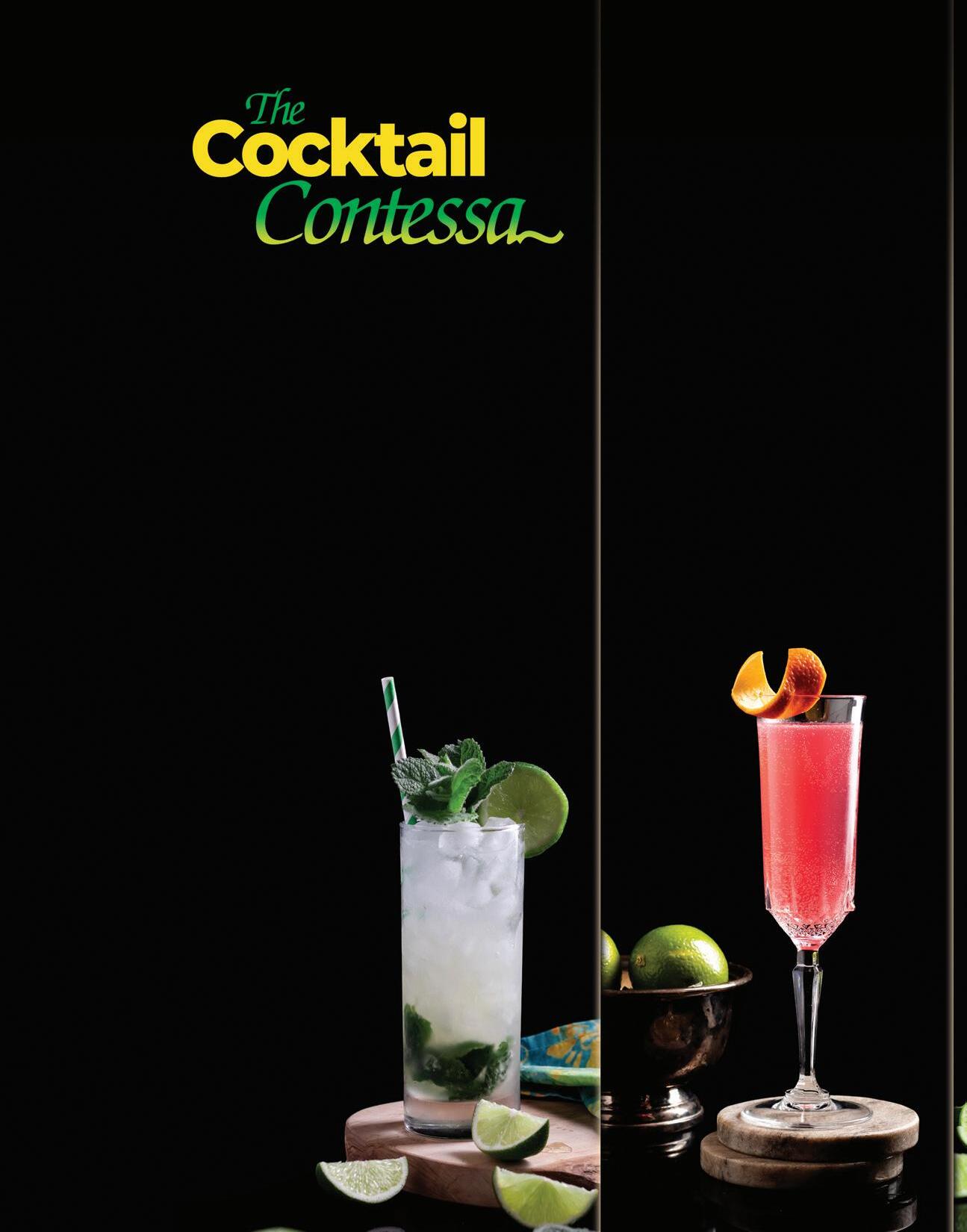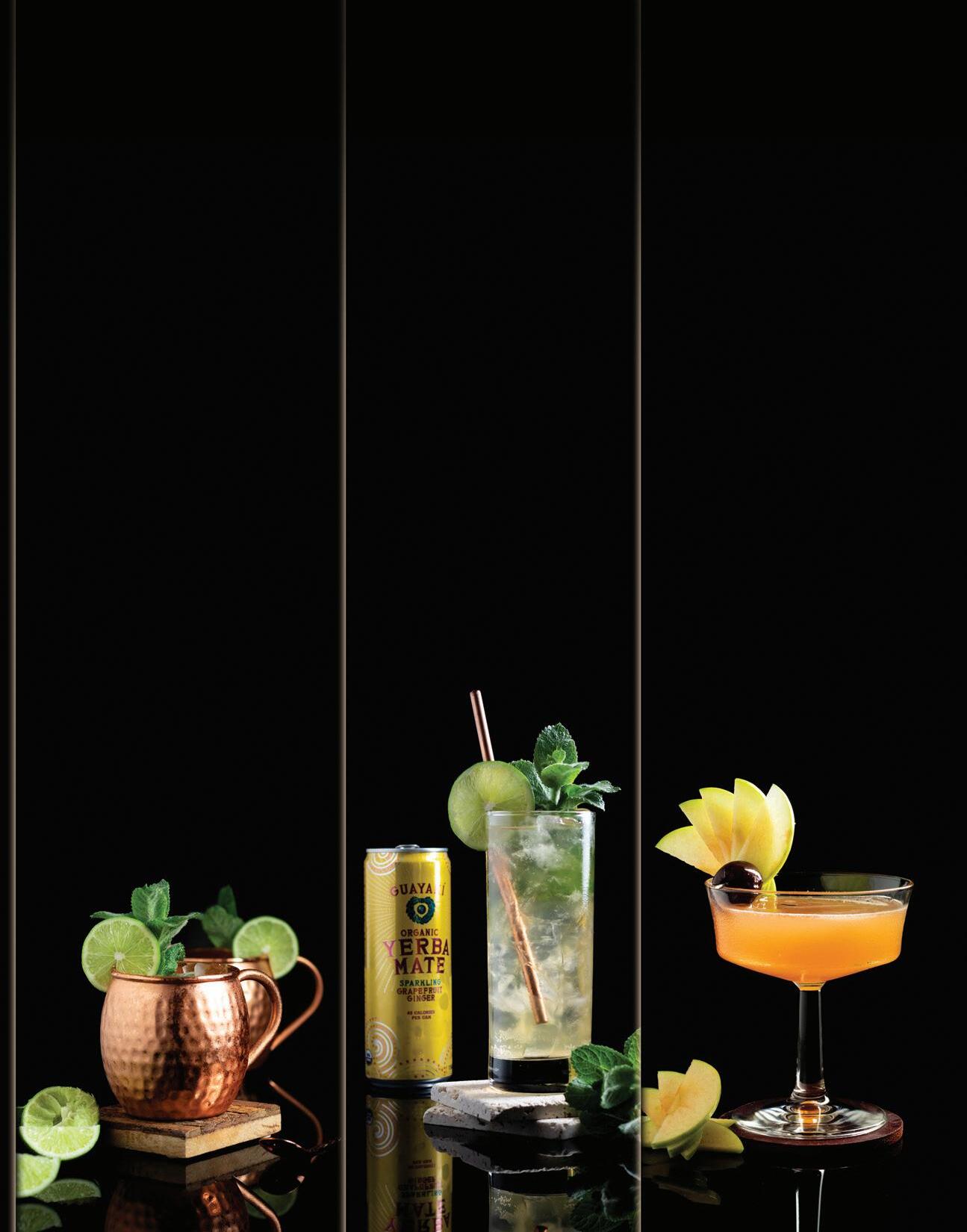
4 minute read
Raising the Bar What’s Old is New (and Better) Again
Acocktail revival was stirring in the late nineties and early aughts, but for most of us outside of major metropolitan cities like New York, Chicago, or San Francisco, great cocktail options had yet to arrive. Patrons were limited to drinks like the Cosmopolitan and Mojito while well-made Old Fashioned and Manhattans headed our way from the coasts. As a nation, we were still developing our cocktail palate in 2003 when Food & Dining was first published.
Today, mixologists at bars across the country have refined the drinker’s palate to expect well-balanced, consistent, satisfying drinks, and the bar scene is better for it. Modern cocktail trends include a focus on simplicity, the celebration of quality ingredients, and low/no alcohol drinks. What would it look like to reimagine some of those cocktails as if they were created today?
These drinks are a testament to the creativity and innovation of bartenders who sought to revive classic cocktails with a modern twist. Among these revived drinks are the Cosmopolitan, Moscow Mule, Mojito, and Appletini cocktails.
The Cosmo cocktail was popularized by its appearance on Sex and the City in 1998 and quickly became a staple of bars across America. The Mule cocktail was first created in 1941 and has since been revived with a modern twist using ginger beer instead of ginger ale. The Mojito cocktail has been around since the 16th century but was revived in the early 2000s with a new twist using fresh mint leaves and lime juice. Finally, the neon green Appletini cocktail was first introduced in the late 1990s but gained popularity in the early 2000s as a sweet and fruity alternative to traditional martinis.
Our way-back machine for the cocktail palate reaffirms the classic nature of these cocktails, but adds a trendy twist to those 2000s sips, a nod to the progress today’s mixologists have made in expanding the palate of bar patrons and success experimenting with the hundreds of new spirits and modifiers along the way. Let’s shake!
Agricole
Mojito Agricole
The mojito was a smash hit in the early 2000s, but today’s mixologists like to celebrate alternate spirits in the classics. Here we’re using rhum agricole, a spirit made from fresh pressed sugar cane juice, not from fermented molasses, like most other rums. The result is herbaceous, grassy, and sweet, and reminds this Kentucky girl of a spirit fresh off the still. Combined with fresh lime juice and sweet mint, you’ve got an easy and refined twist on the mojito.
2 oz rhum agricole
¾ oz fresh lime juice
½ oz sugar cane syrup (1:1 simple made with cane sugar)
8-10 mint leaves
Soda water
Garnish: lime wedge and mint sprig
Muddle the mint with the simple syrup in the bottom of a Collins glass. Add fresh juice, rhum agricole, and fill ¾ full of crushed ice. Stir for about 15 seconds, until the outside of the Collins glass frosts over. Top off with a small splash of soda and more crushed ice. Garnish and serve. Pro tip: to add a little bit of the tropics, top with a splash of coconut, pineapple, or passionfruit seltzer instead of unflavored soda water.
Cosmo-sbagliato
Cosmos ruled the roost in 2003, and the classic recipe celebrated around the world was developed by cocktail master Dale DeGroff. In today’s bar scene, lower-ABV cocktails continue to rise in popularity. To create this low-ABV cocktail, let’s look at the template of the Negroni Sbagliato. We can make a simple substitution and replace the vodka with a rosé prosecco to create a lovely, updated summer cocktail.
2 oz rosé prosecco
½ oz triple sec
1 oz sweetened cranberry juice
½ oz lime juice
½ oz Lillet Rosé
Garnish: expressed orange peel
Add all ingredients but bubbles to a cocktail shaker and shake briefly. Add to a champagne flute and top with prosecco. Garnish with expressed orange peel.
Mezcal Mule
A classic Moscow Mule, made with vodka, uses the spirit to bolster proof, but tequila and mezcal are hot spirits in the market right now, both at home and behind the bar. Mixing a little smoky mezcal into the drink makes this a supremely quenching cocktail to sip. For a tropical vibe add Q Mixers Tropical ginger beer.
1.5 oz mezcal (split with tequila blanco if you prefer less smoke)
¾ oz lime juice
¼ oz agave syrup
4 oz ginger beer
Garnish: mint and lime wedge
Add the mezcal, lime juice, and agave syrup to a copper mule mug. Fill ½ way with crushed ice, stir briefly, and fill to the top with ice. Top with ginger beer and garnish.
Not Your Vodka Redbull
A cocktail renaissance may have started in the late 90s, but in Kentucky and surrounding areas, the vodka Redbull was the drink of choice for many young bar patrons in the 2000s. A healthier energy drink option in the form of either Yerba Mate sparkling, Phocus caffeinated seltzer or Celsius energy drink makes this easy two-ingredient cocktail actually palatable and fun to drink. This cocktail works with Yerba Mate for those who prefer less sweet drinks and Celsius for those who lean sweet.
1.5 oz modern citrusy gin
4-6 oz Yerba Mate sparkling grapefruit ginger OR Celsius Tropical Vibe
Garnish: a spritz of orange bitters, pineapple wedge/leaves, or a simple lime wheel
To a Collins glass filled with ice, add the vodka, then top with either Yerba Mate sparkling or Celsius, spritz with a bit of orange bitters, and garnish. If you prefer a sweeter drink pair vodka with Alani Energy Dream Float. If you favor the driest of the dry, pair vodka with Phocus Blood Orange.
Modern Appletini
There’s no reason to revisit the neon green, sour-apple martinis of the late 90s and early aughts. But, well-crafted calvados or fine apple brandy creates a delicious, cultured base for a classic apple sour. Garnish with a fan of apple slices and a cherry for a striking presentation.
1½ oz calvados or Laird’s apple brandy
½ oz Lillet blanc
¾ oz lemon juice
1 oz fresh apple cider
½ oz apple cider syrup*
Garnish: apple fan and cherry
Combine ingredients in a cocktail shaker and fill with ice. Shake for 10-12 seconds, then strain into a chilled coupe glass and garnish.

* Apple Cider Syrup:
Add 1 cup of apple cider to a sauce pan and heat to a simmer. Let simmer until about ⅓ of the cider has evaporated. Add ½ cup raw sugar and take off the heat. Cool and store in the fridge. F&D







